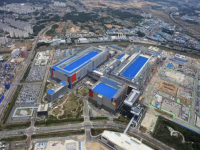In addition to Weibo, there is also WeChat
Please pay attention

WeChat public account
Shulou


2025-11-24 Update From: SLTechnology News&Howtos shulou NAV: SLTechnology News&Howtos > Development >
Share
Shulou(Shulou.com)05/31 Report--
This article mainly explains "how to use VMware to add a hard disk for centos", the content of the article is simple and clear, easy to learn and understand, the following please follow the editor's ideas slowly in depth, together to study and learn "how to use VMware to add a hard disk for centos" bar!
1. First edit the virtual machine-add
two。 Select the type of device to add-hard disk
3. Create a new disk (my need is a new disk)
4. Choose the disk size according to your needs (this is the experimental environment 5gb is enough)
5. Select the virtual device node (I am the default, you can see the first picture of the hard drive 1 is scsi (0:0) the newly added hard disk 2 is scsi (0:1) no problem), the independent option of persistence and non-persistence is for snapshots, the setting will be very clear, not much to say.
6. Here to see if the choice meets your needs, if not, you can change it in the previous step.
7 start the virtual machine console, or connect your virtual machine remotely with ssh

8. Use
Fdisk-l
Check to see if there is a disk you added.
9. Use
Fdisk / dev/sdb
Partition a disk
M: show all commands
P: displays the partition situation
N: set a new partition
E: it is (extend) extended partition
P: that is (primary) the main partition. We choose p here.
1-4: it's the partition number, anything from 1 to 4.
First/last cylinder: start / end cylinder (I only need one zone to enter directly, if it is divided into multiple zones, it needs to be calculated)
W: save
10. Use
Fdisk-l
Check your newly distributed disk (the last one / dev/sdb1 is it)
11. Assign a file operating system to your partition (it will take a long time to format)
twelve。 Use
Mount / dev/sdb1 / test/
Mount to the directory you need
13. Take a look at the fstab file under etc and sdb1's uuid
Blkid / etc/sdb1
14. Open the fstab file and write the sdb1 according to the file format of the previous line. Don't touch anything else or you won't be able to start the computer easily.
15. Since then, mounting the disk is complete. You can restart with reboot. Use
Df-h
Check to see if it's still there.
Thank you for your reading, the above is the content of "how to use VMware to add a hard disk for centos". After the study of this article, I believe you have a deeper understanding of how to use VMware to add a hard disk for centos. Here is, the editor will push for you more related knowledge points of the article, welcome to follow!
Welcome to subscribe "Shulou Technology Information " to get latest news, interesting things and hot topics in the IT industry, and controls the hottest and latest Internet news, technology news and IT industry trends.
Views: 0
*The comments in the above article only represent the author's personal views and do not represent the views and positions of this website. If you have more insights, please feel free to contribute and share.

The market share of Chrome browser on the desktop has exceeded 70%, and users are complaining about

The world's first 2nm mobile chip: Samsung Exynos 2600 is ready for mass production.According to a r


A US federal judge has ruled that Google can keep its Chrome browser, but it will be prohibited from

Continue with the installation of the previous hadoop.First, install zookooper1. Decompress zookoope







About us Contact us Product review car news thenatureplanet
More Form oMedia: AutoTimes. Bestcoffee. SL News. Jarebook. Coffee Hunters. Sundaily. Modezone. NNB. Coffee. Game News. FrontStreet. GGAMEN
© 2024 shulou.com SLNews company. All rights reserved.